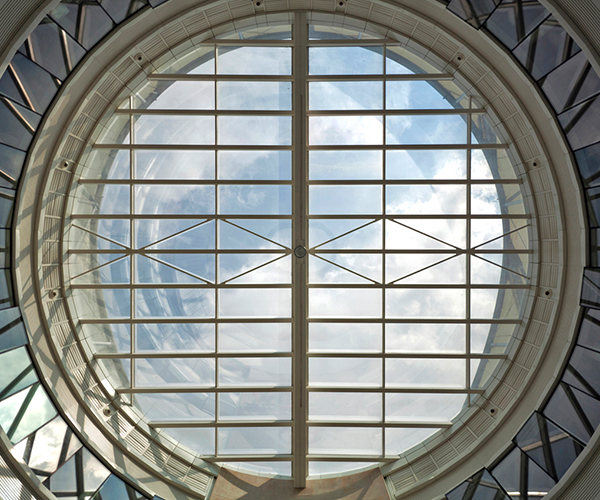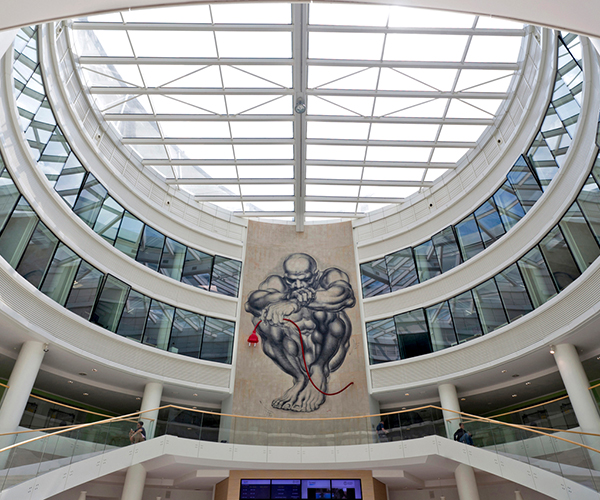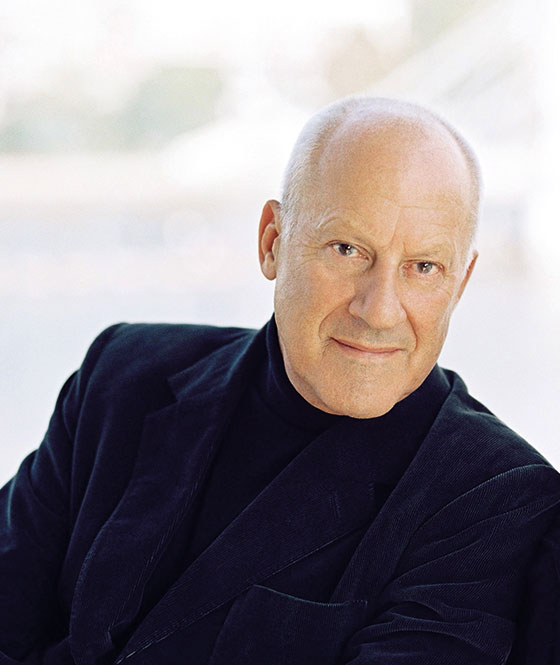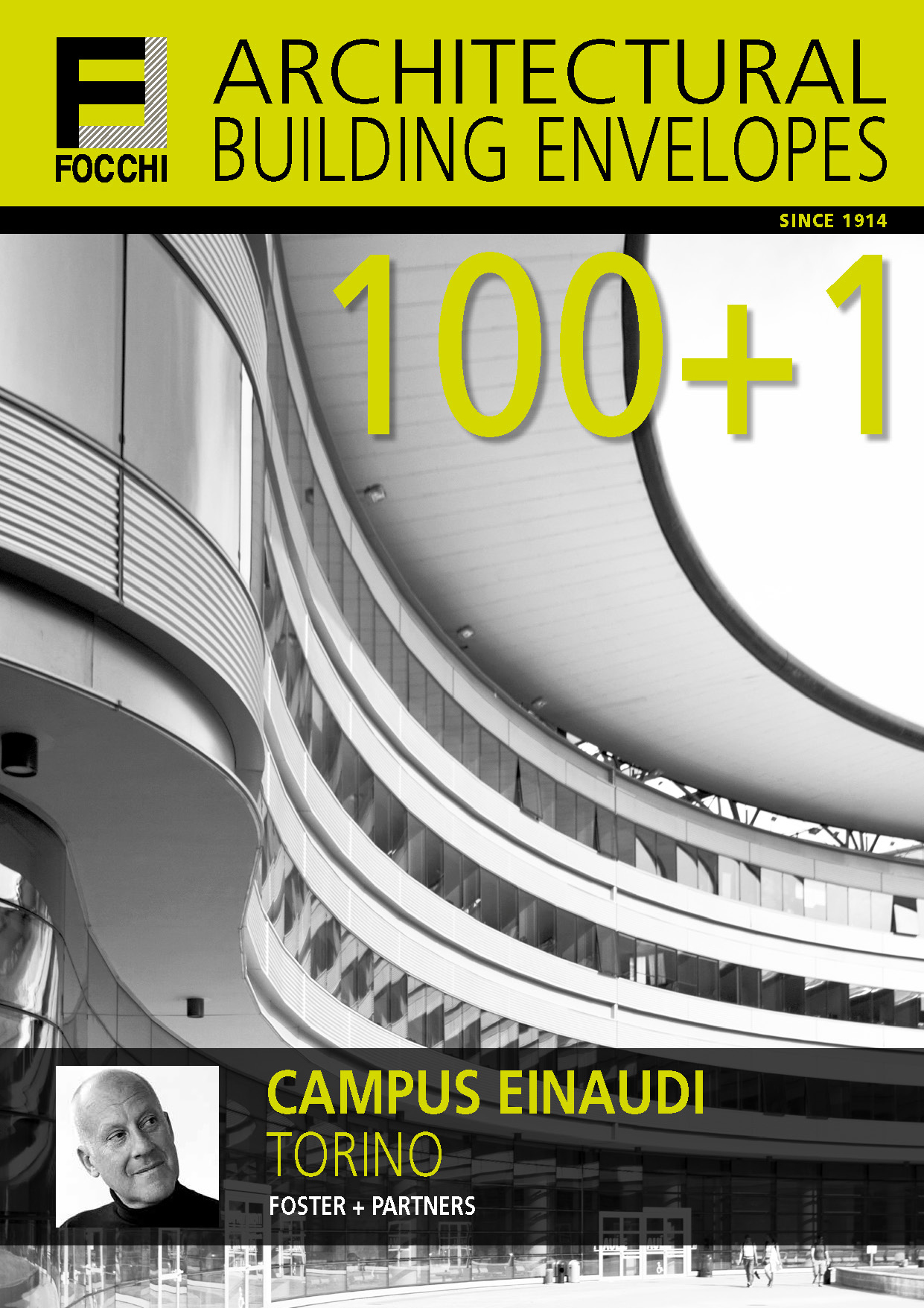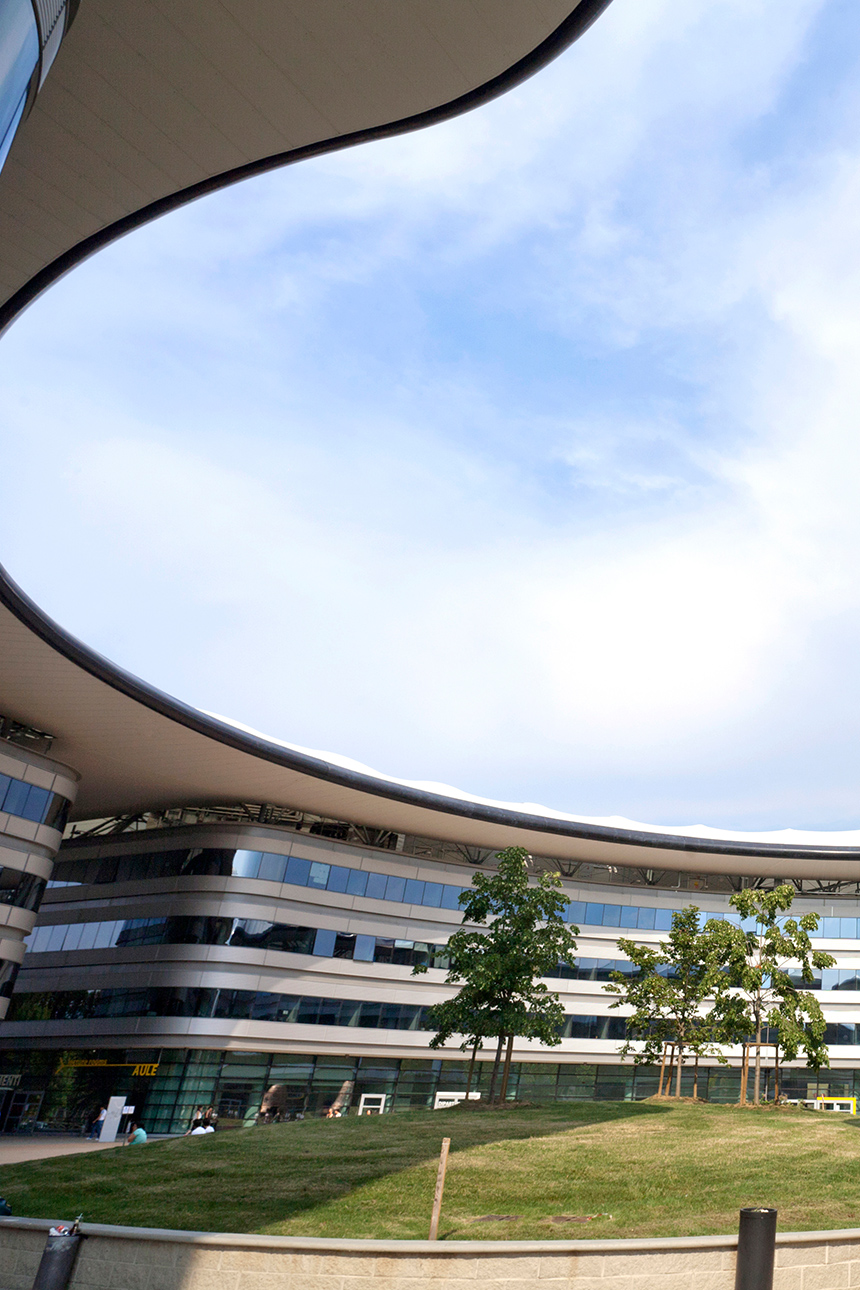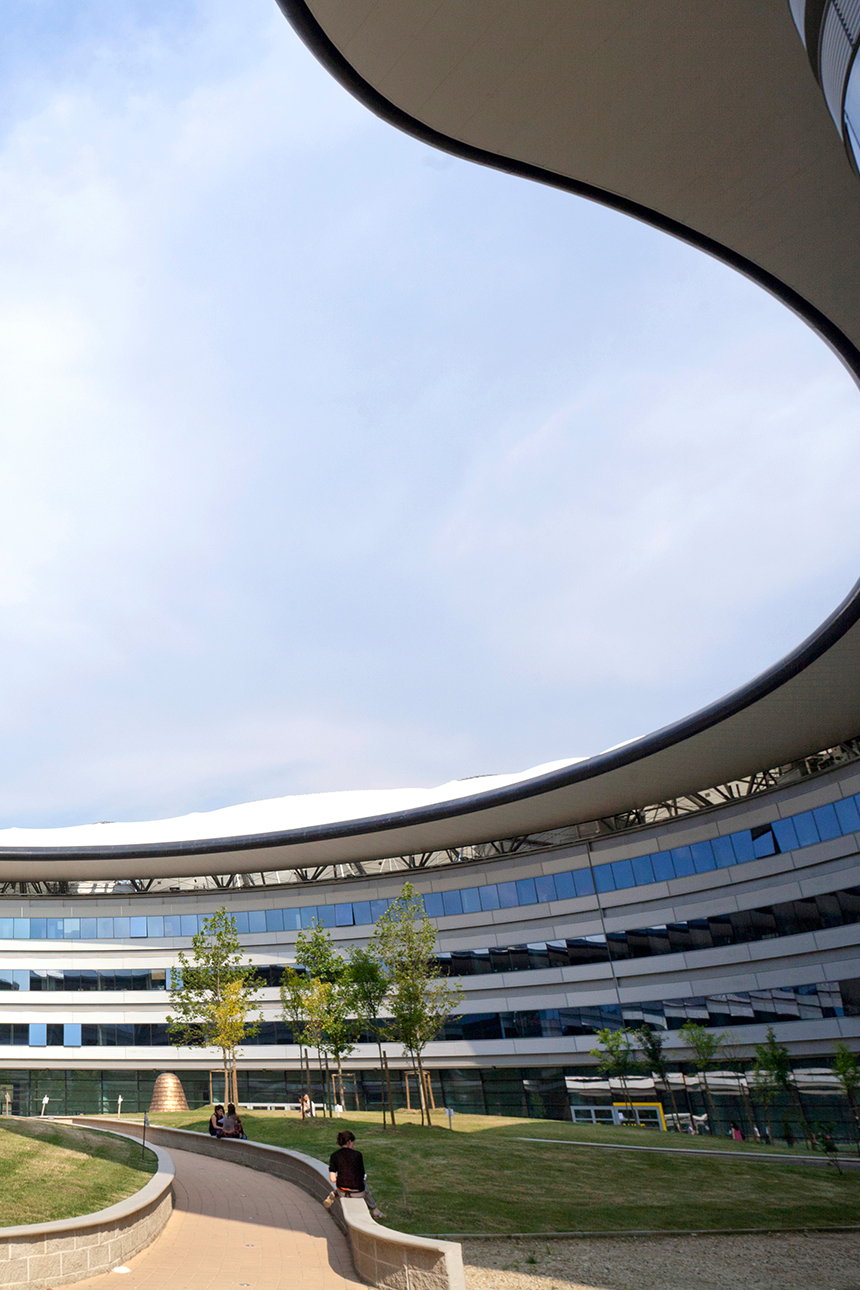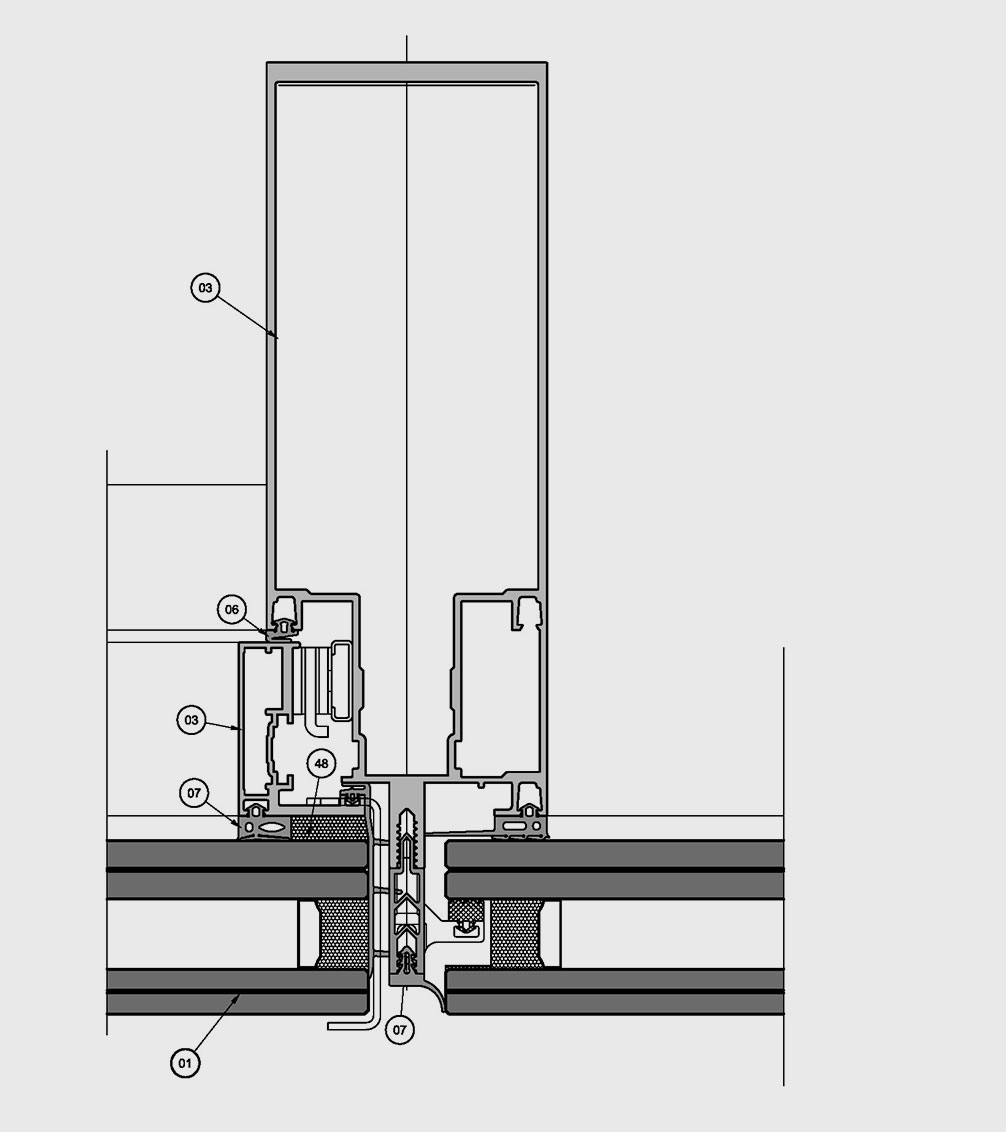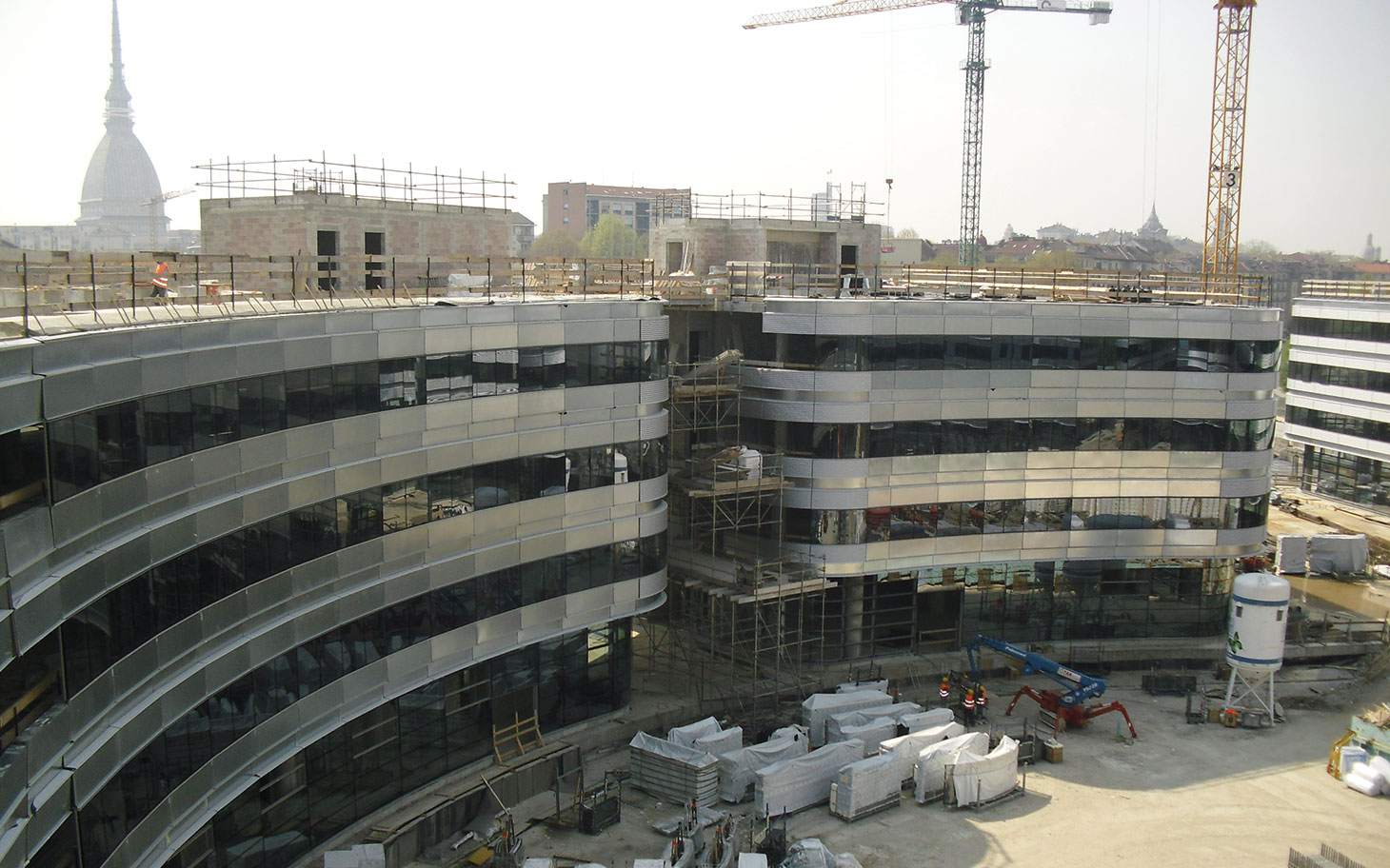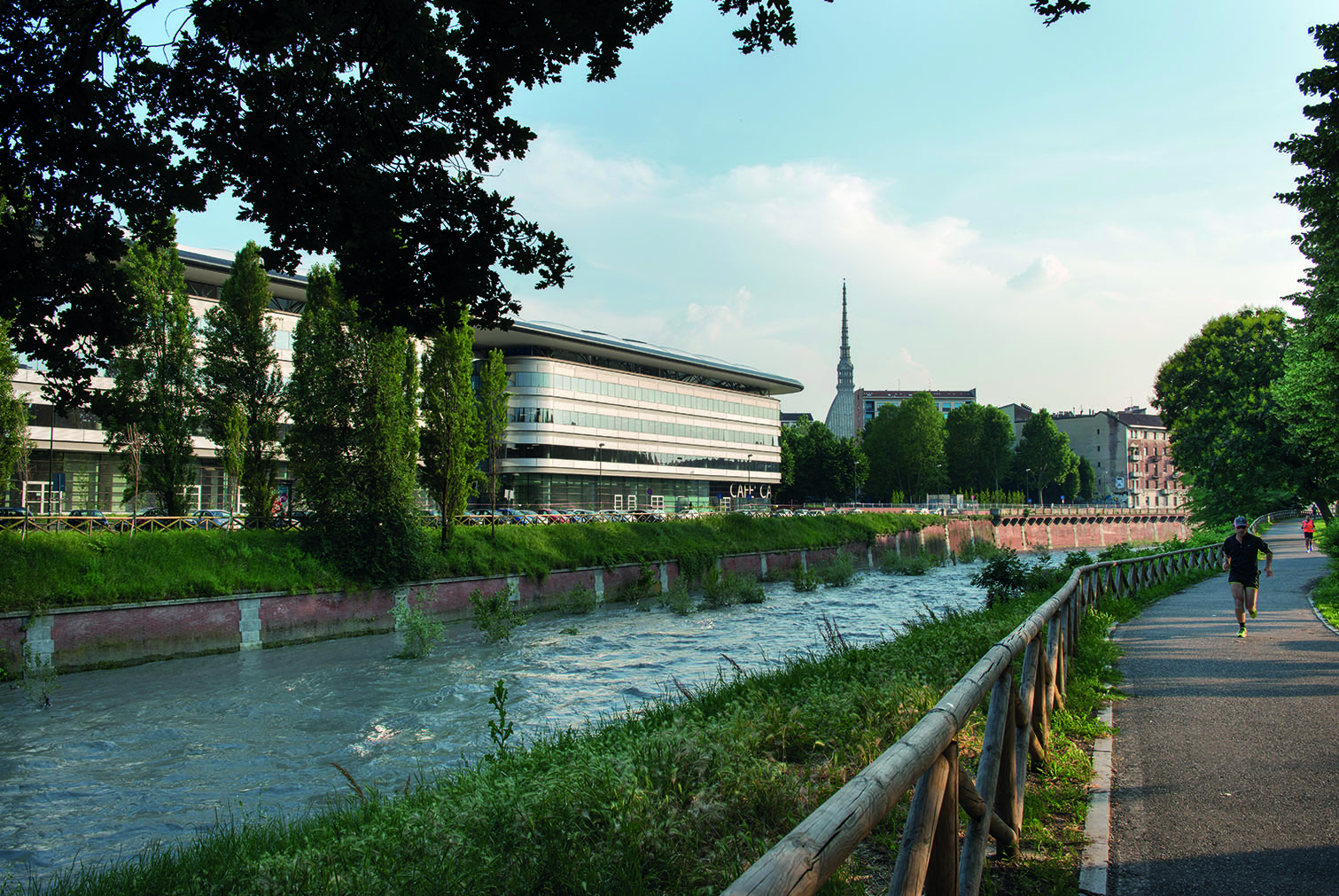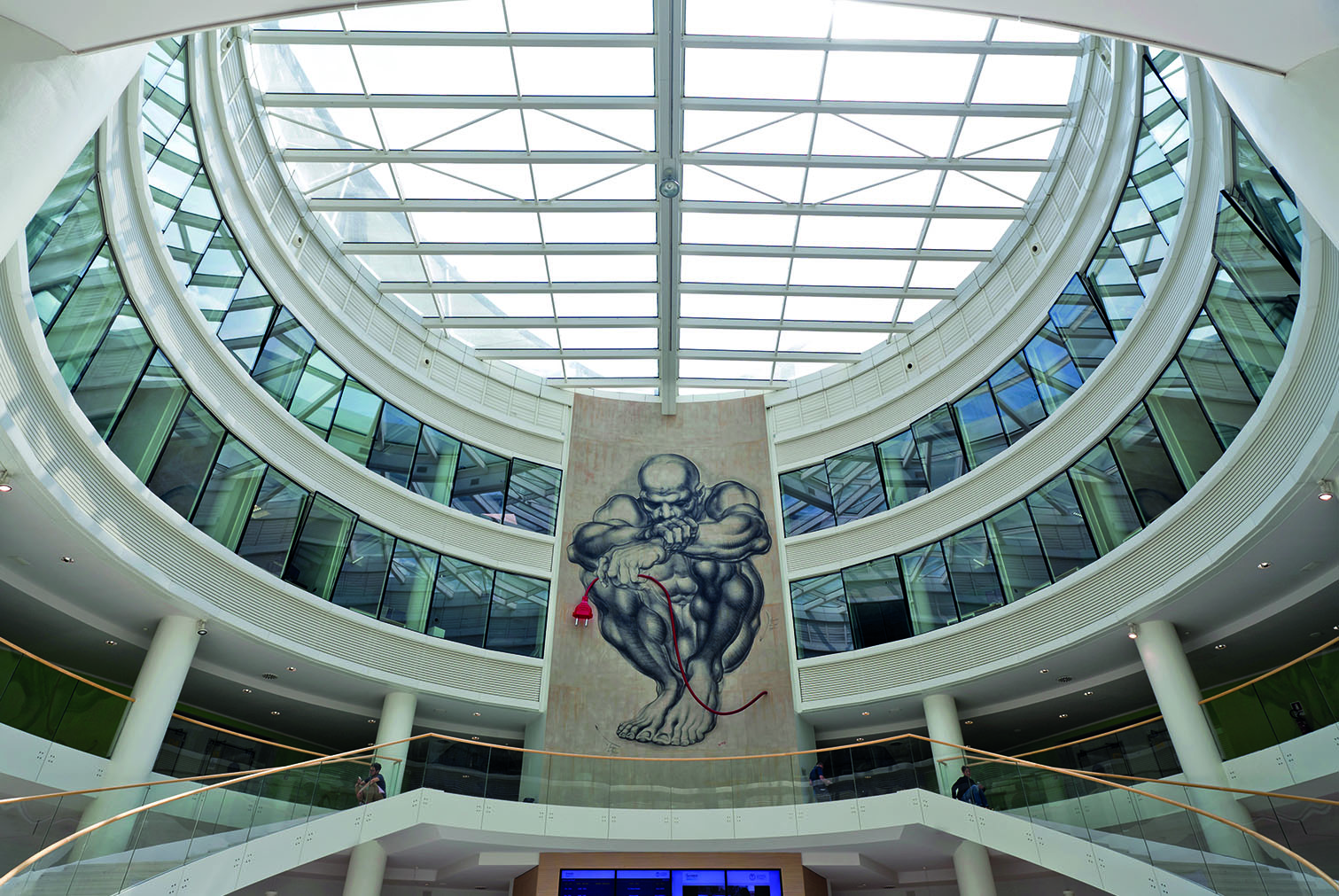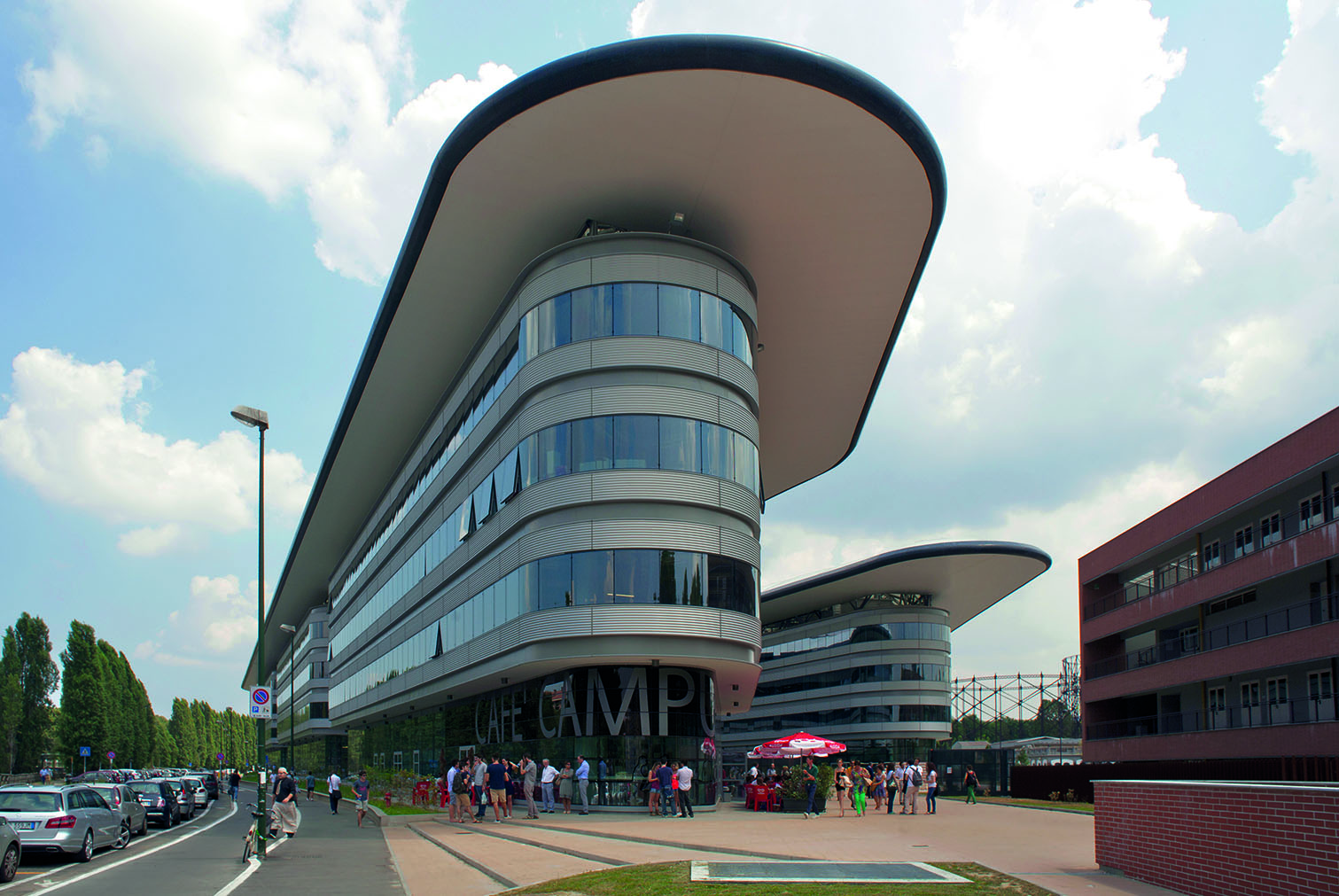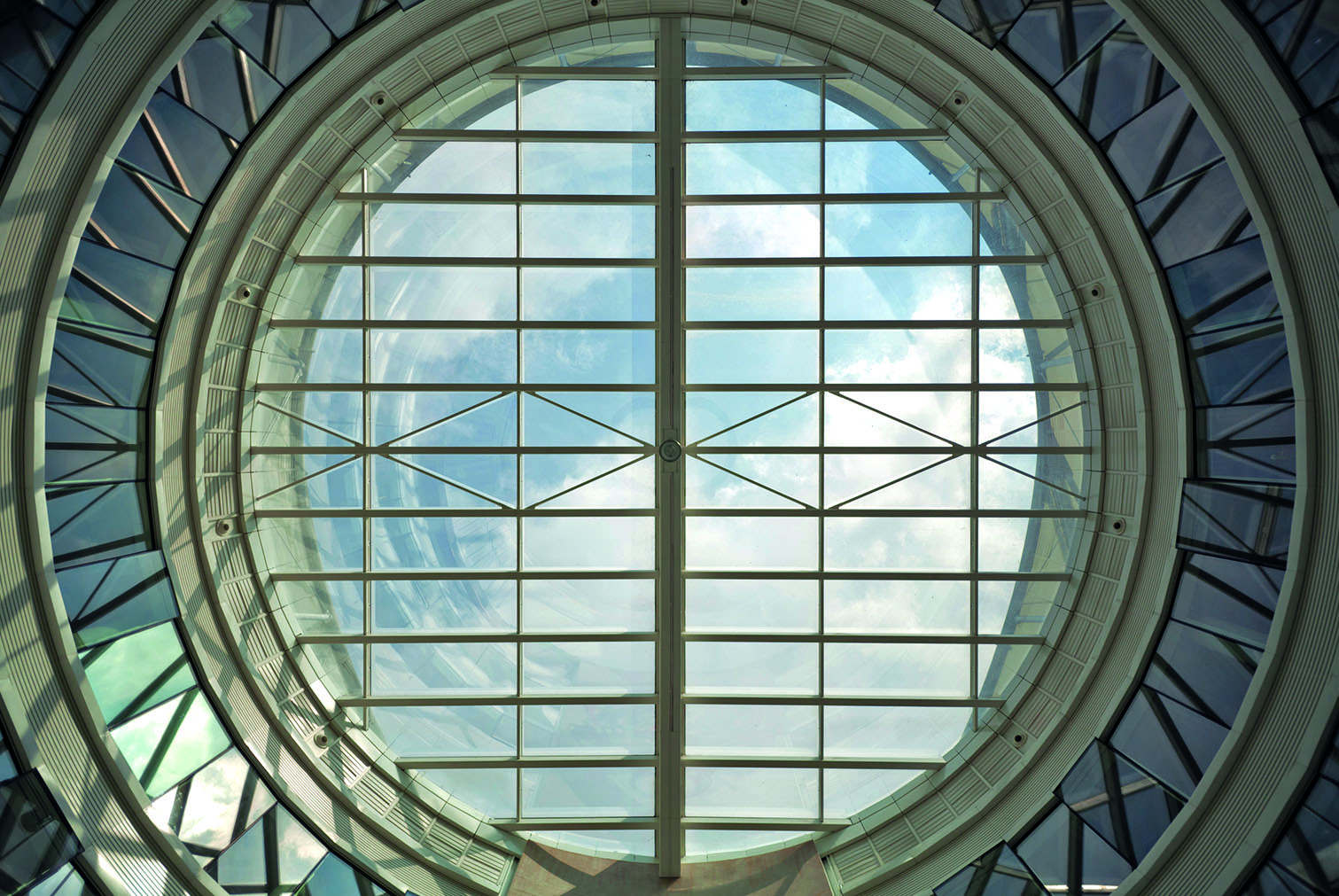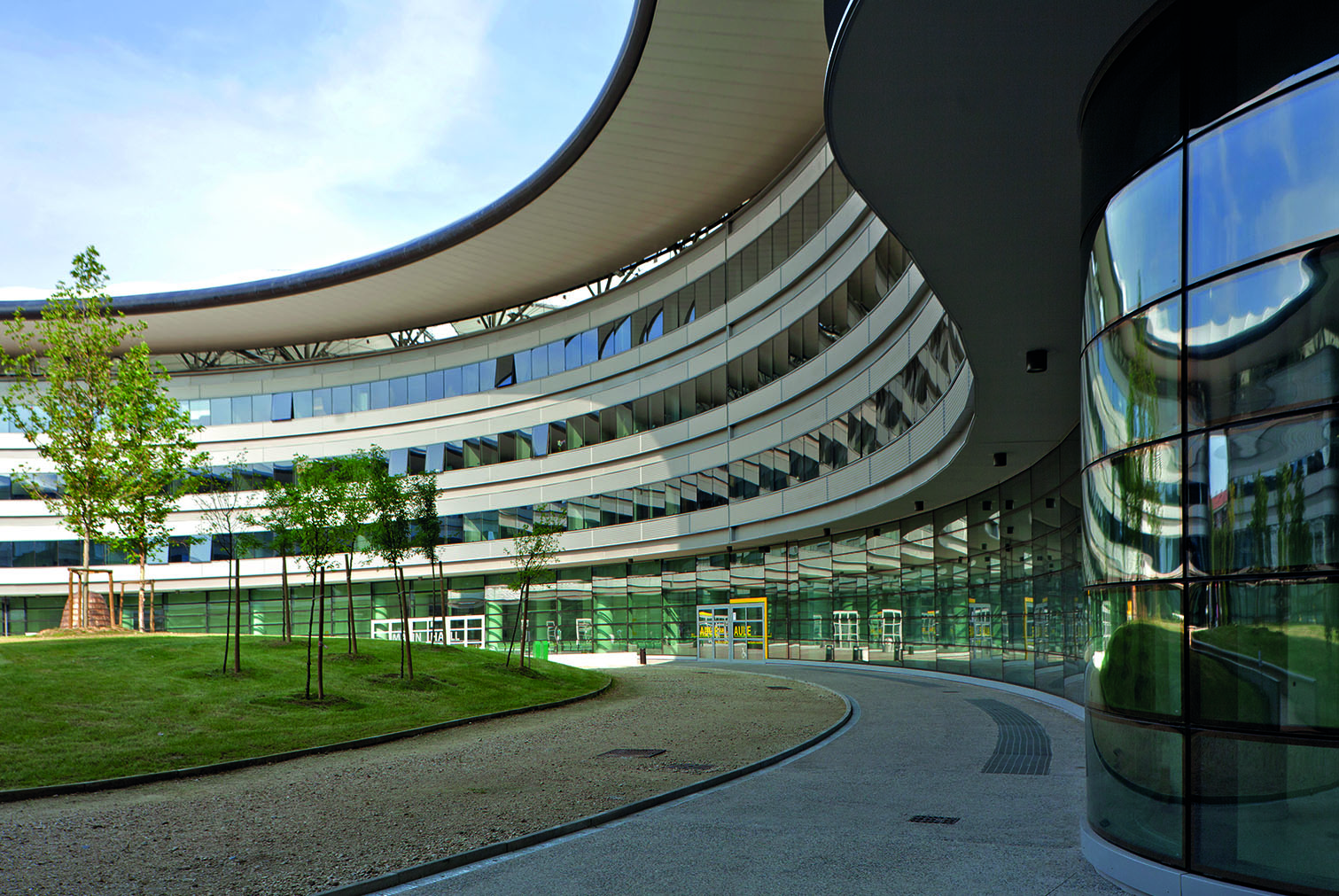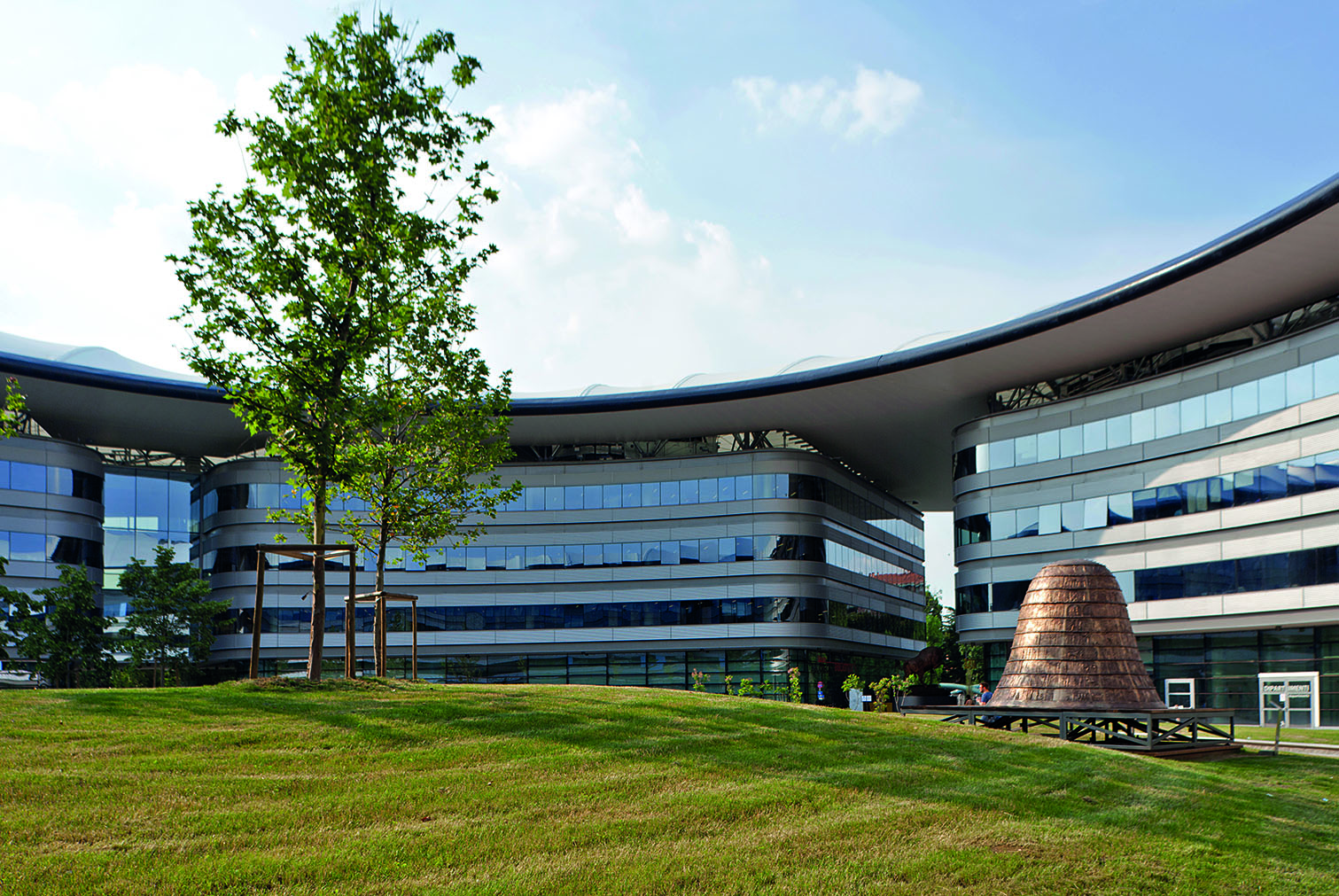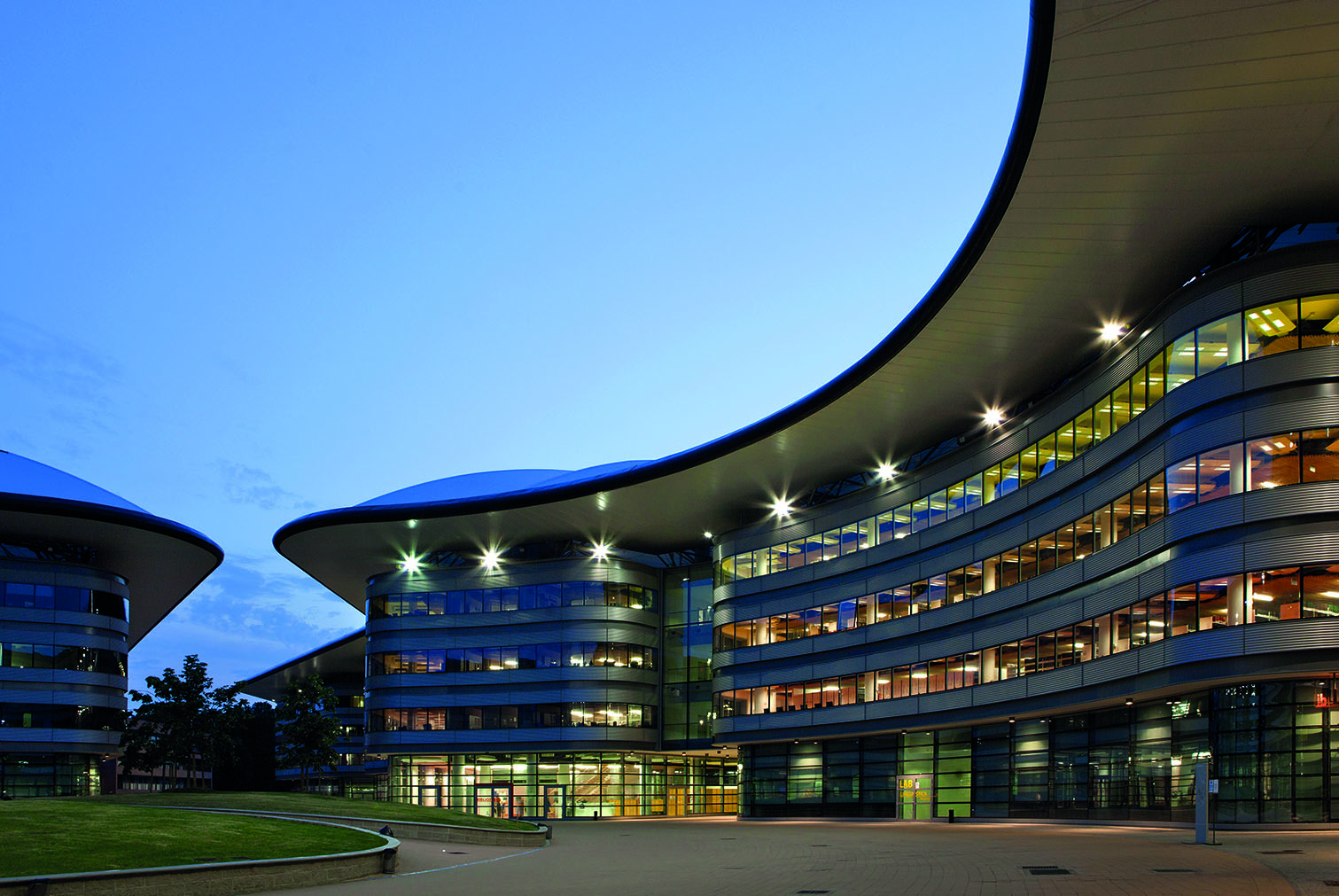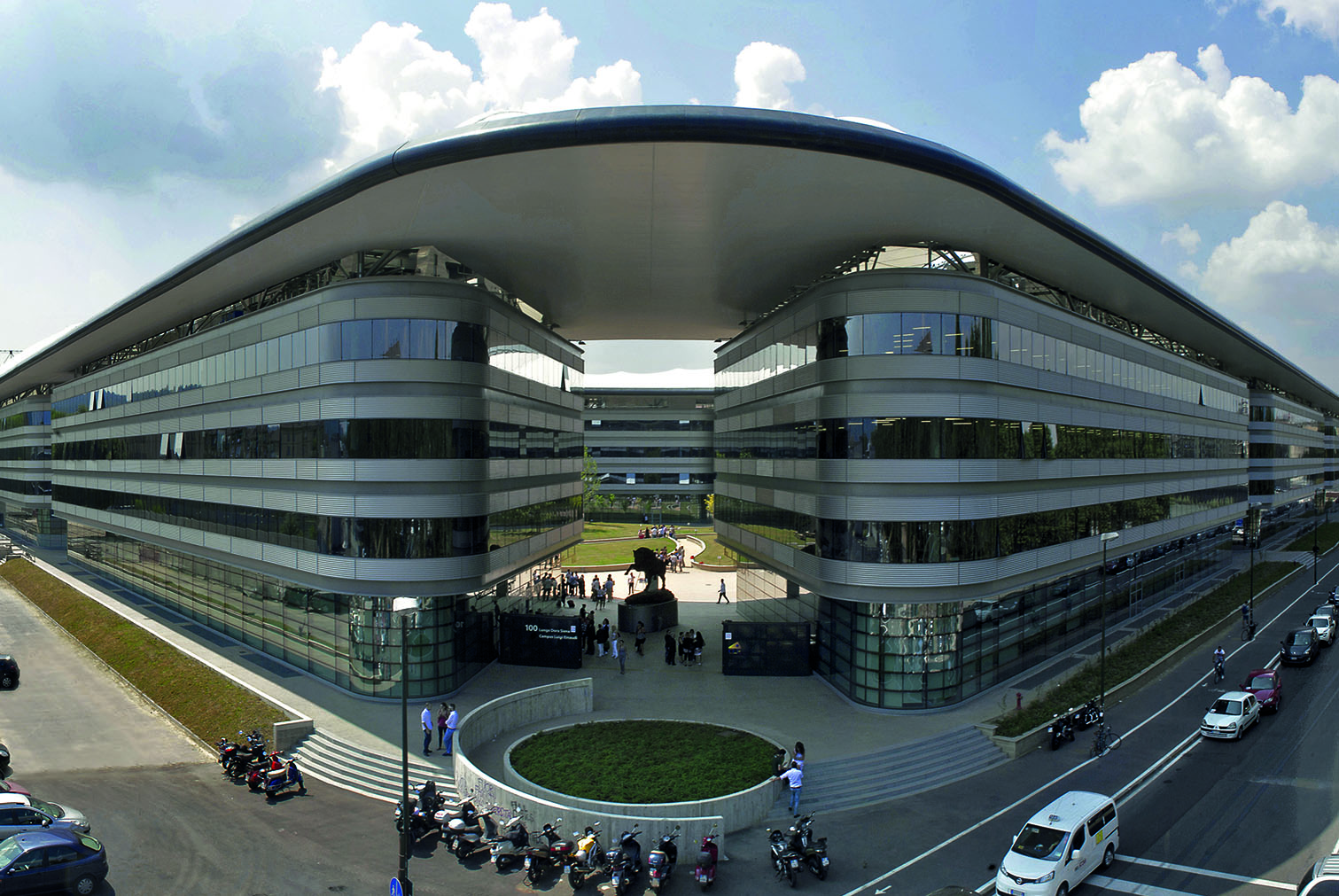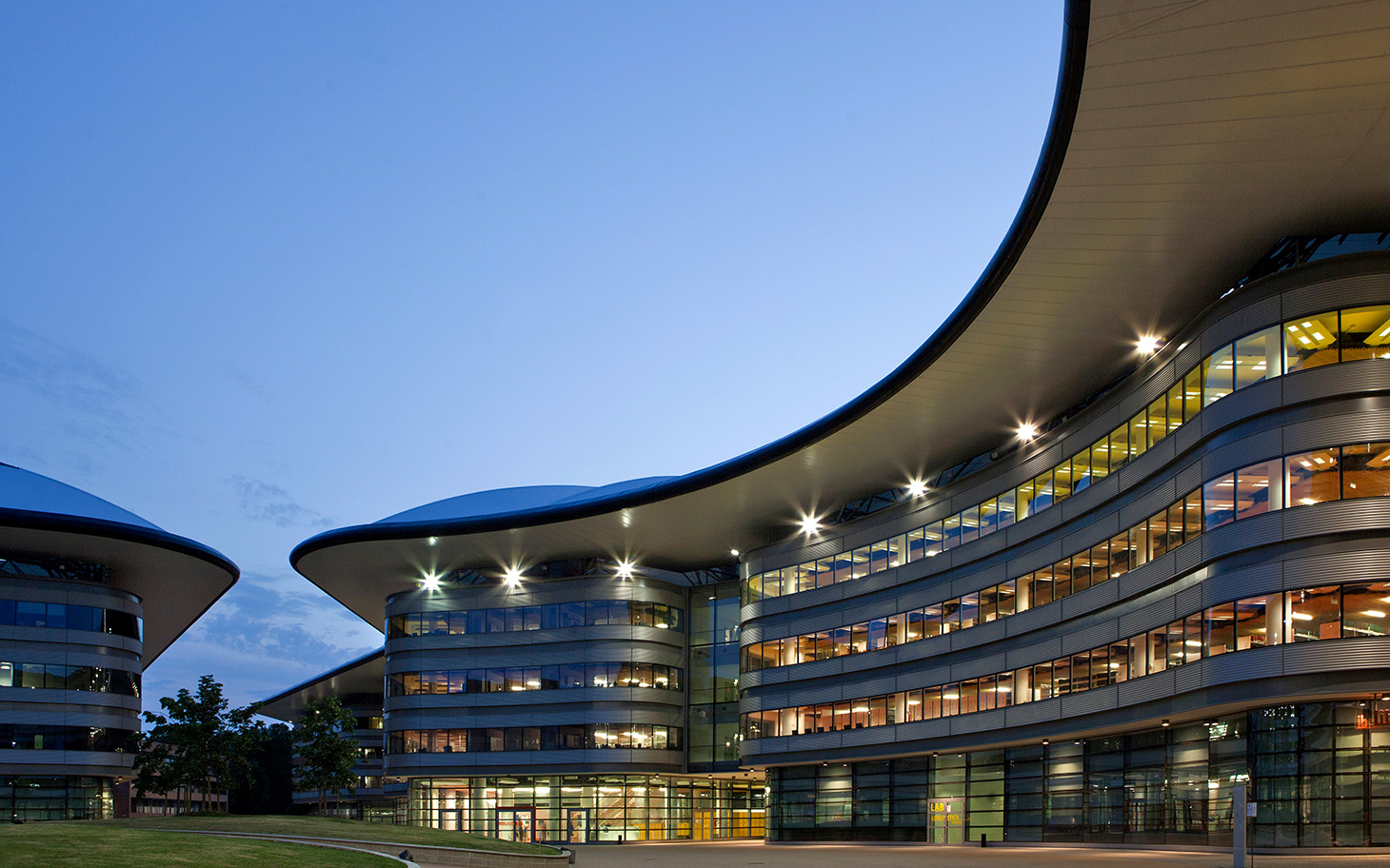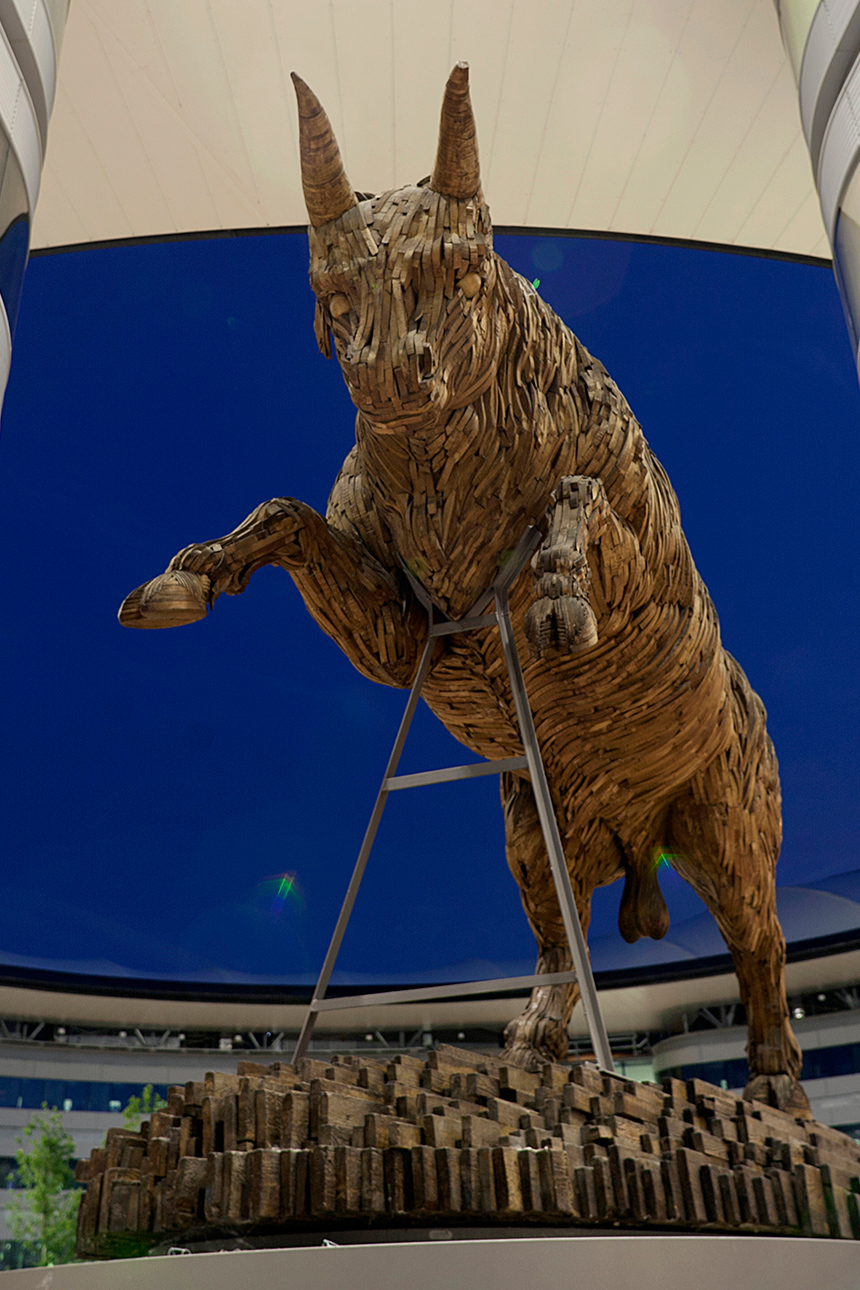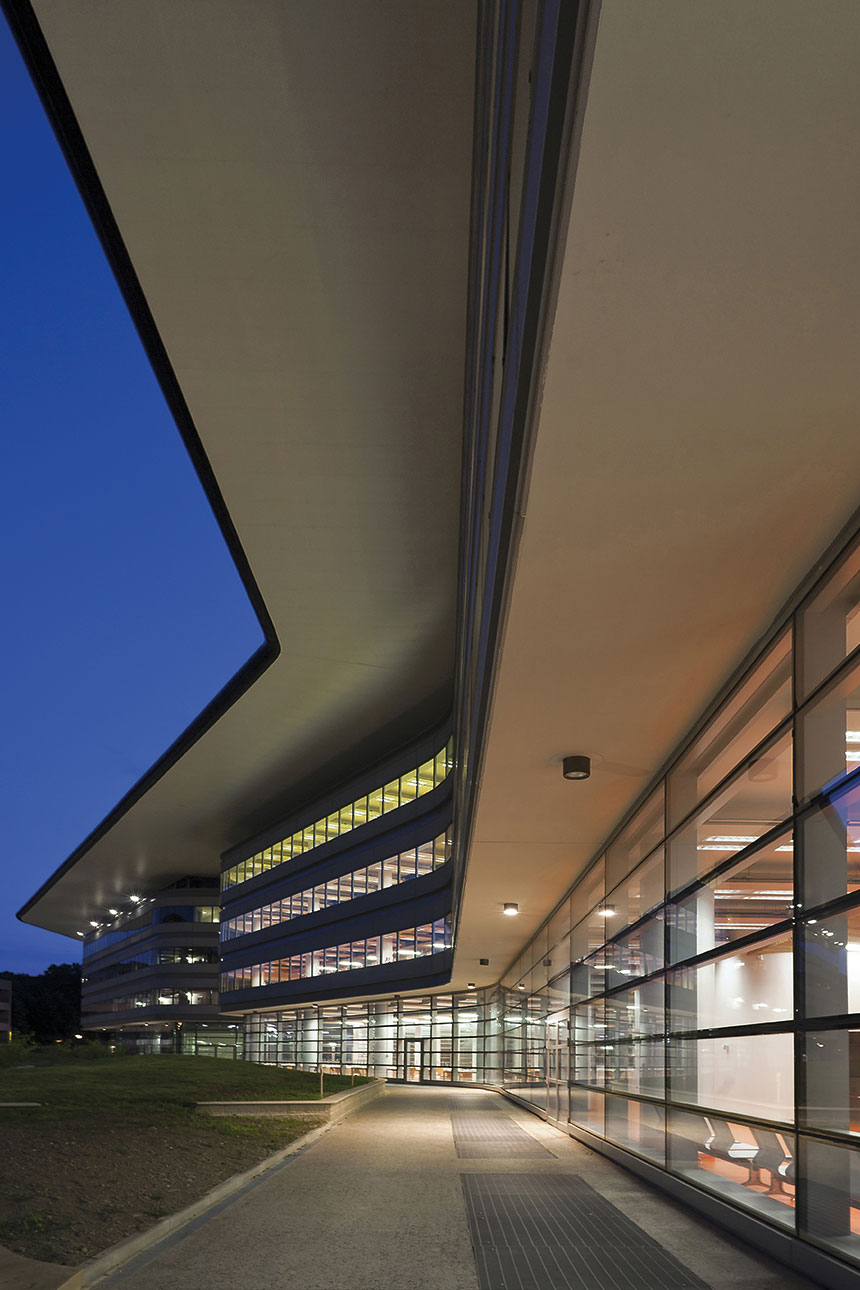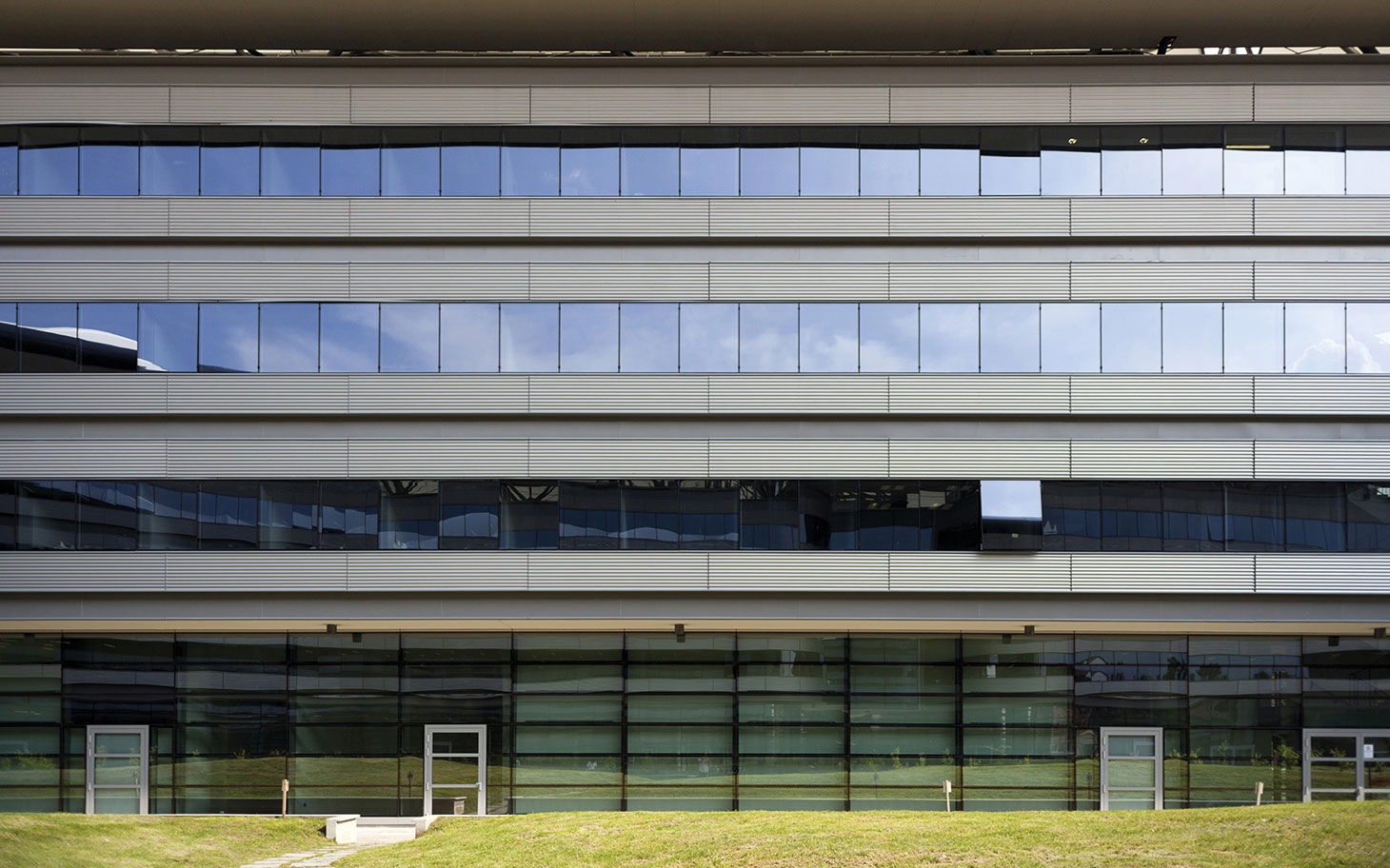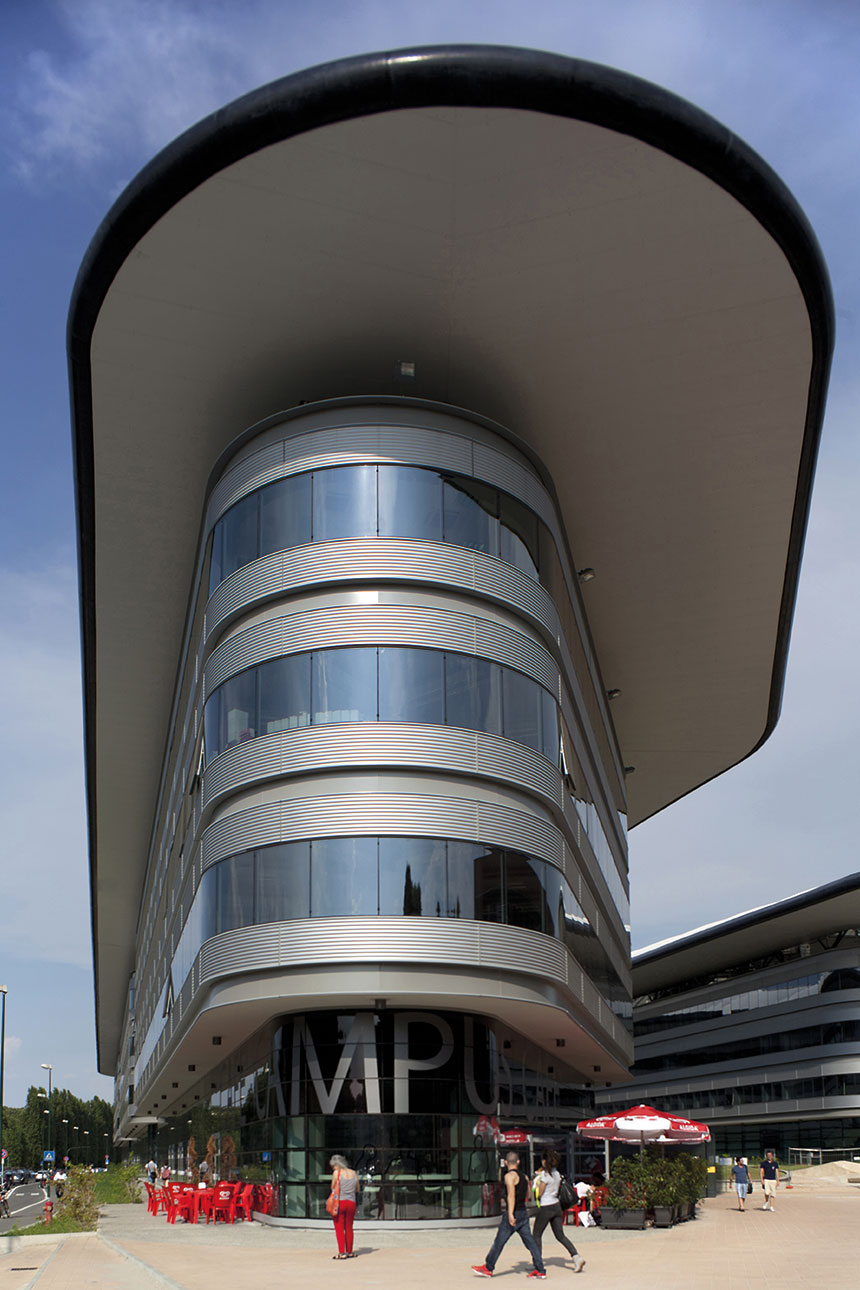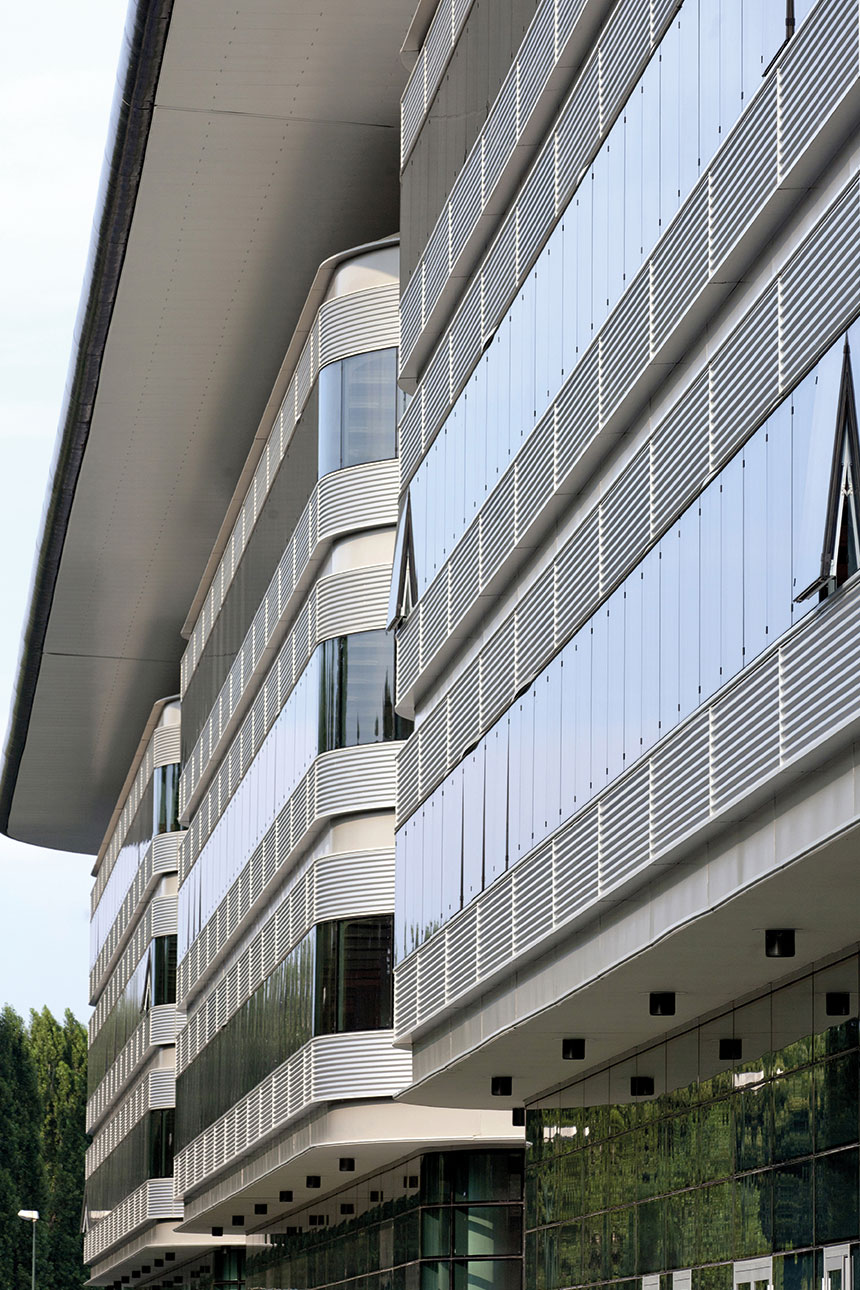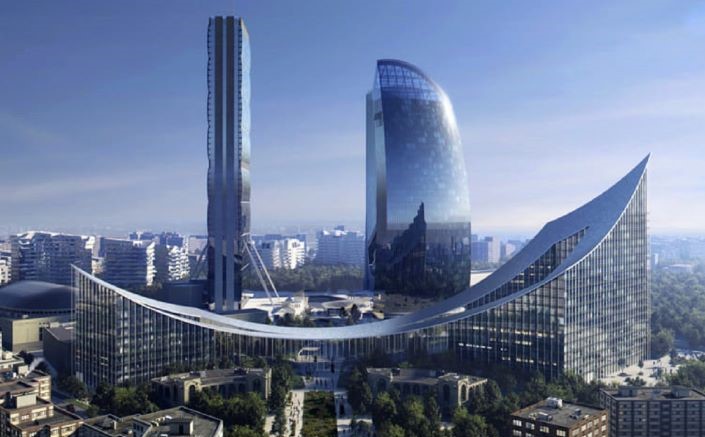Architecture and functionality of a building are inextricably linked to the layout solutions of the aggregate areas.
For what concerns the Einaudi Campus, the importance of these issues is evident in the main distribution nodes, where attention to the architecture of service spaces has been increased.
Above a large skylight closes the top of the atrium onto which face the inside views of the offices.
The quality of this central space is enriched by the work of art created by the artist Riki Ferrero, almost a parallel with the Hearst Tower, designed by Foster + Partners
in New York in 2006. There, a large atrium wall hosts the artwork by Richard Long, a visual artist, leading exponent of the Land Art.
